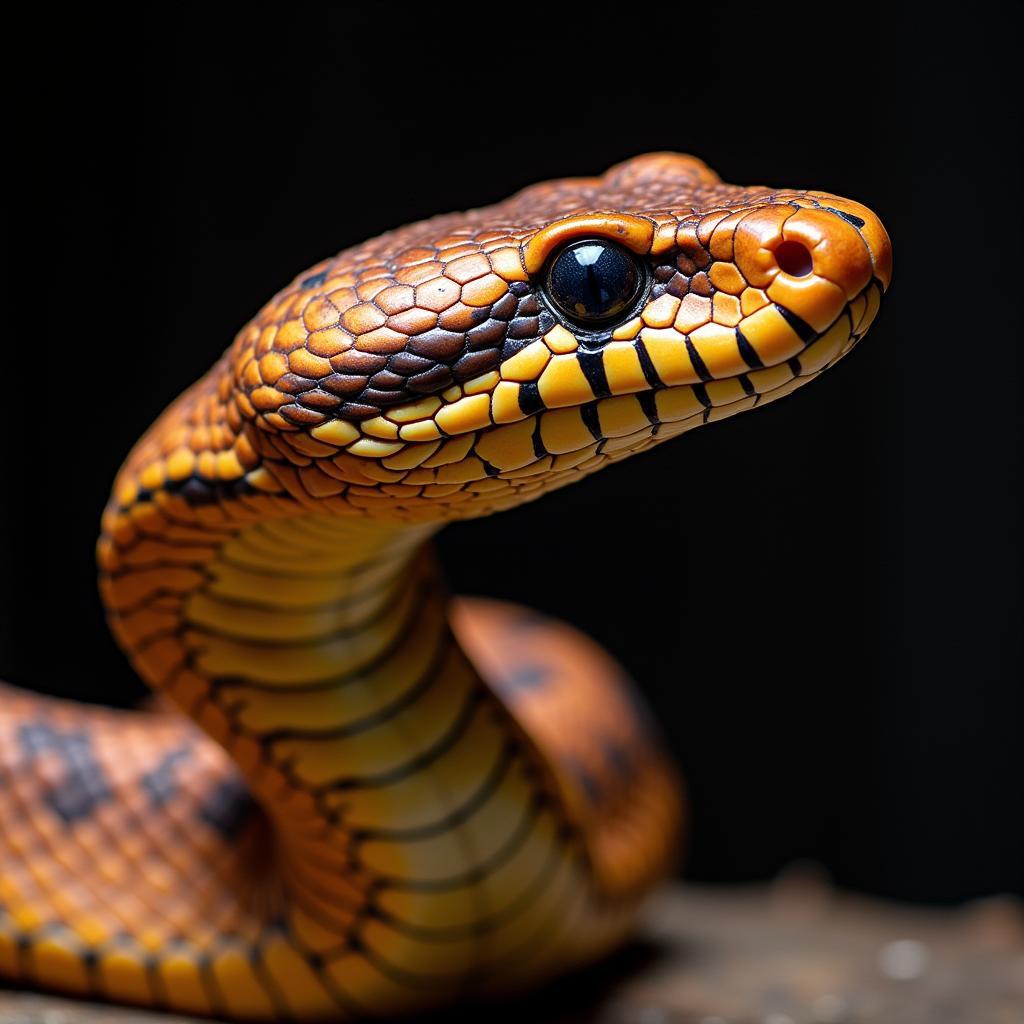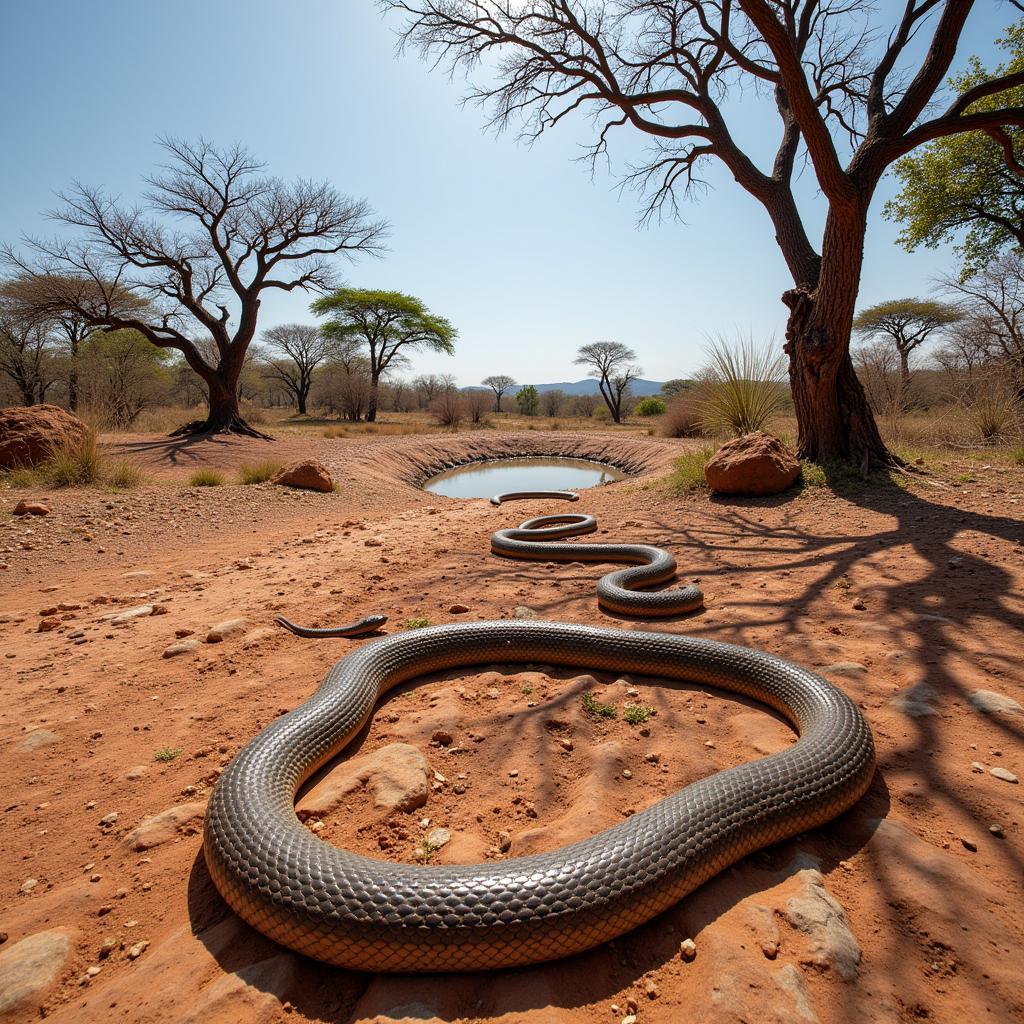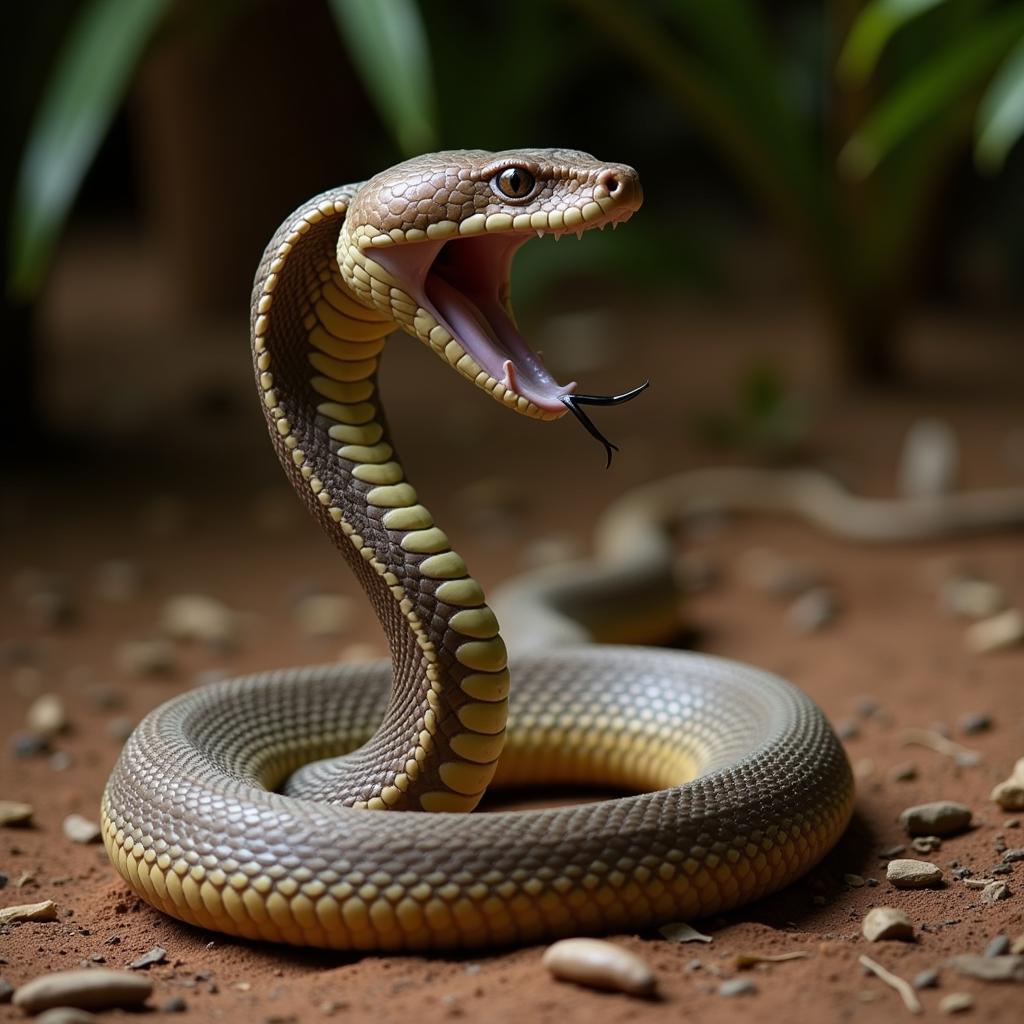The African Copper Cobra: A Striking Serpent of Southern Africa
The African Copper Cobra, scientifically known as Naja nigricollis, is a captivating yet venomous snake species inhabiting various regions of sub-Saharan Africa. This highly adaptable snake, known for its distinctive coloration and potent venom, is a subject of both fascination and fear.
Unveiling the Copper Cobra: Appearance and Habitat
 African copper cobra portrait
African copper cobra portrait
African copper cobras exhibit a remarkable variation in color, ranging from a shimmering copper to shades of brown and even black. Their most distinguishing feature, however, is the dark band or “collar” that often adorns their necks, giving rise to their species name nigricollis which means “black-necked” in Latin. These snakes are relatively slender, with adults typically reaching lengths of 1.2 to 1.8 meters.
 African copper cobra habitat
African copper cobra habitat
African copper cobras demonstrate a preference for savannas, woodlands, and semi-arid regions. Their adaptability allows them to thrive in diverse habitats, from coastal scrublands to mountainous terrains, as long as water sources are accessible.
Venom and Defensive Behavior: A Formidable Force
The African copper cobra is renowned for its highly potent venom, a complex cocktail of neurotoxins and cytotoxins that target the nervous system and body tissues. What sets this cobra apart is its remarkable defense mechanism: instead of relying solely on biting, it can spray venom from its fangs with impressive accuracy over distances of up to 2 meters.
 African copper cobra defensive display
African copper cobra defensive display
When threatened, the African copper cobra raises its forebody off the ground, spreads its impressive hood, and hisses loudly as a warning. If the threat persists, it may choose to spray its venom, aiming for the eyes of the aggressor. This defensive strategy, while not always fatal, can cause severe pain, temporary blindness, and even permanent eye damage.
Diet and Lifestyle: An Adaptable Predator
African copper cobras are primarily diurnal, meaning they are most active during the day, although they may exhibit some nocturnal activity in warmer climates. They are opportunistic feeders, with a diet consisting mainly of amphibians, lizards, snakes (including other cobra species), birds, and small mammals.
“The African copper cobra’s ability to adapt to different prey items depending on availability is a key to its survival across such a wide range,” explains Dr. Abena Osei, a herpetologist specializing in African snake venom. “This adaptability, combined with their potent venom, makes them highly successful predators within their ecosystems.”
Myths and Misconceptions: Separating Fact from Fiction
In many African cultures, snakes, including the copper cobra, are often shrouded in myths and folklore. While some stories depict them as creatures of darkness or bringers of misfortune, it’s essential to remember that these are simply narratives passed down through generations.
“It’s crucial to approach wildlife, especially venomous species, with respect and caution, grounded in scientific understanding rather than folklore,” emphasizes Dr. Osei. “Education and awareness are paramount in dispelling harmful myths and fostering co-existence.”
Conclusion: Appreciating the Copper Cobra
The African copper cobra, with its striking appearance, potent venom, and unique defensive behavior, stands as a testament to the diversity and wonder of Africa’s wildlife. Understanding their biology, behavior, and ecological importance is essential for promoting conservation efforts and mitigating human-wildlife conflict.
While encountering a copper cobra in the wild can be a daunting experience, appreciating their beauty and ecological role from a safe distance allows us to admire these fascinating creatures without jeopardizing their well-being or our own.

